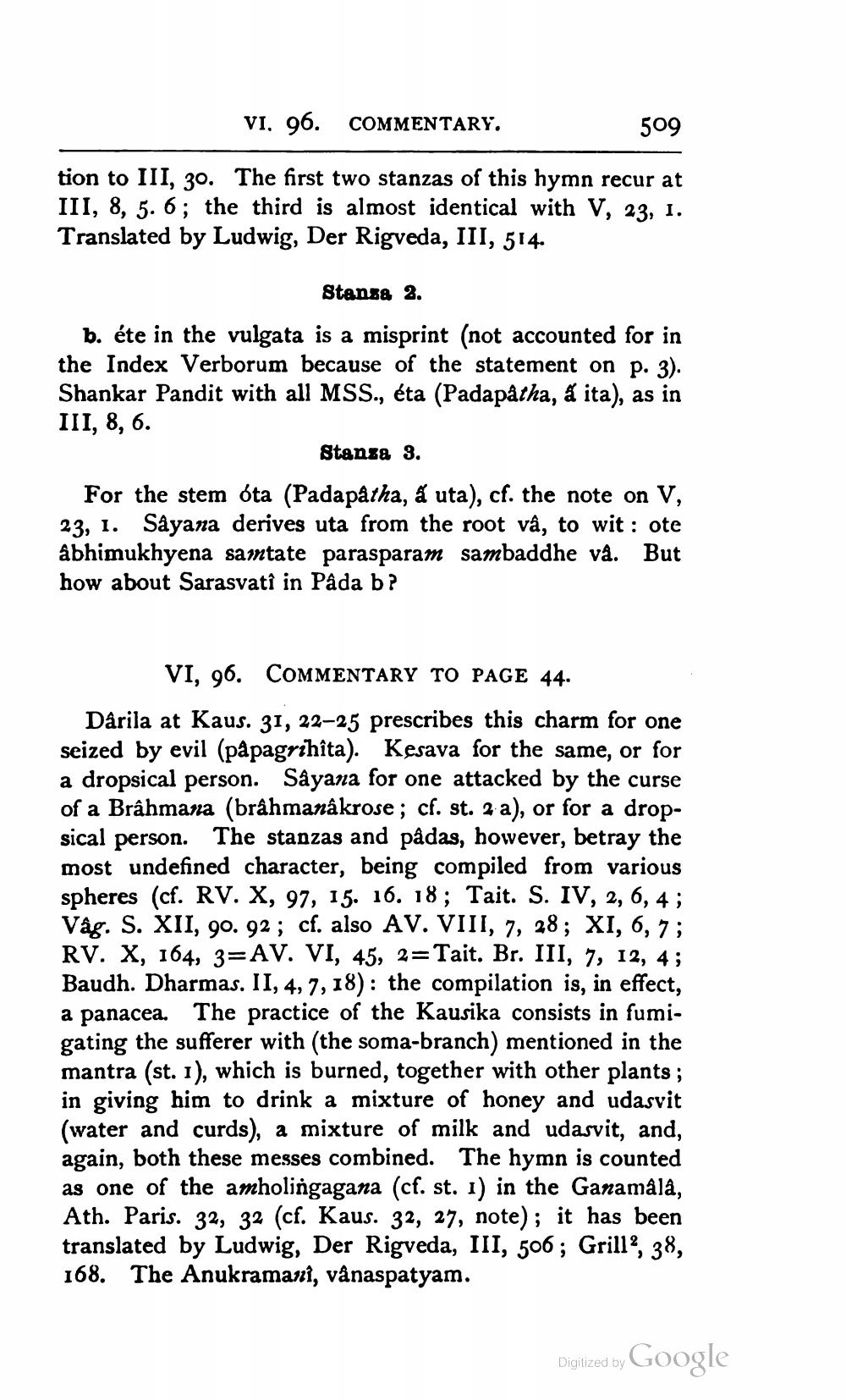________________
COMMENTARY.
509
tion to III, 30. The first two stanzas of this hymn recur at III, 8, 5. 6; the third is almost identical with V, 23, 1. Translated by Ludwig, Der Rigveda, III, 514.
Stanse 2. b. éte in the vulgata is a misprint (not accounted for in the Index Verborum because of the statement on p. 3). Shankar Pandit with all MSS., éta (Padapåtha, & ita), as in III, 8, 6.
Stansa 3. For the stem óta (Padapatha, a uta), cf. the note on V, 23, 1. Sâyana derives uta from the root vâ, to wit : ote abhimukhyena samtate parasparam sambaddhe va. But how about Sarasvatî in Pâda b?
VI, 96. COMMENTARY TO PAGE 44. Darila at Kaus. 31, 22-25 prescribes this charm for one seized by evil (pâpagrihîta). Kesava for the same, or for a dropsical person. Sayana for one attacked by the curse of a Brâhmana (brâhmanâkrose; cf. st. 2-a), or for a dropsical person. The stanzas and pâdas, however, betray the most undefined character, being compiled from various spheres (cf. RV. X, 97, 15. 16. 18; Tait. S. IV, 2, 6, 4; Våg. S. XII, 90. 92 ; cf. also AV. VIII, 7, 28; XI, 6, 7; RV. X, 164, 3=AV. VI, 45, 2=Tait. Br. III, 7, 12, 4; Baudh. Dharmas. II, 4, 7, 18): the compilation is, in effect, a panacea. The practice of the Kausika consists in fumigating the sufferer with (the soma-branch) mentioned in the mantra (st. 1), which is burned, together with other plants ; in giving him to drink a mixture of honey and udasvit (water and curds), a mixture of milk and udasvit, and, again, both these messes combined. The hymn is counted as one of the amholingagana (cf. st. 1) in the Ganamala, Ath. Paris. 32, 32 (cf. Kaus. 32, 27, note); it has been translated by Ludwig, Der Rigveda, III, 506; Grill, 38, 168. The Anukramani, vånaspatyam.
Digized by Google




